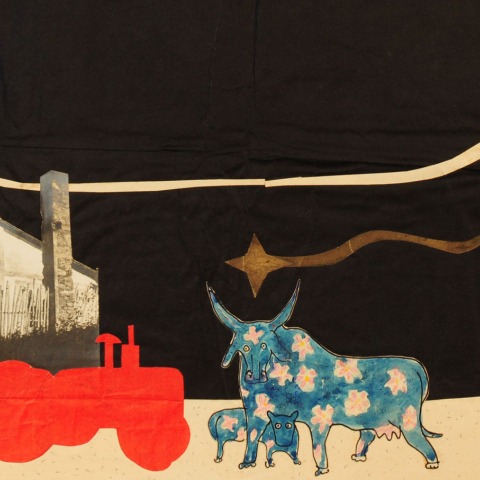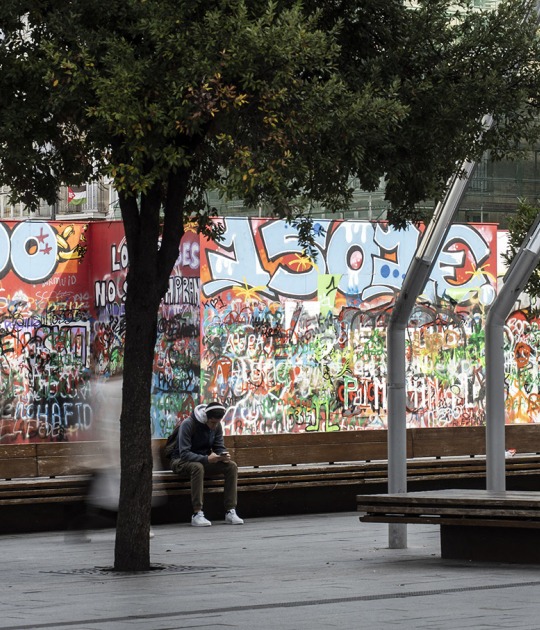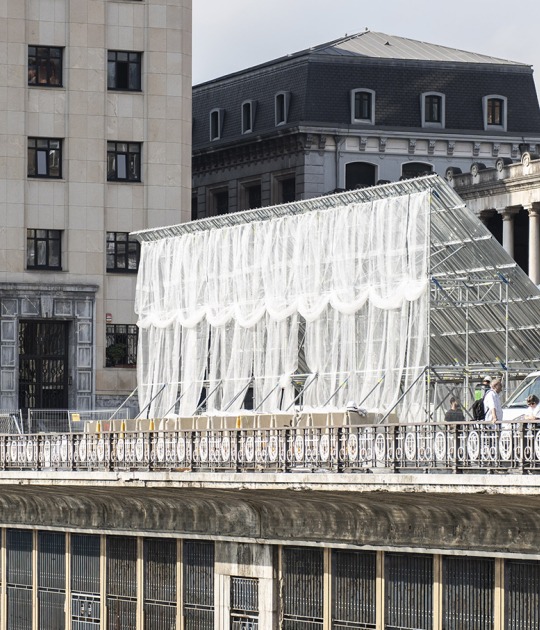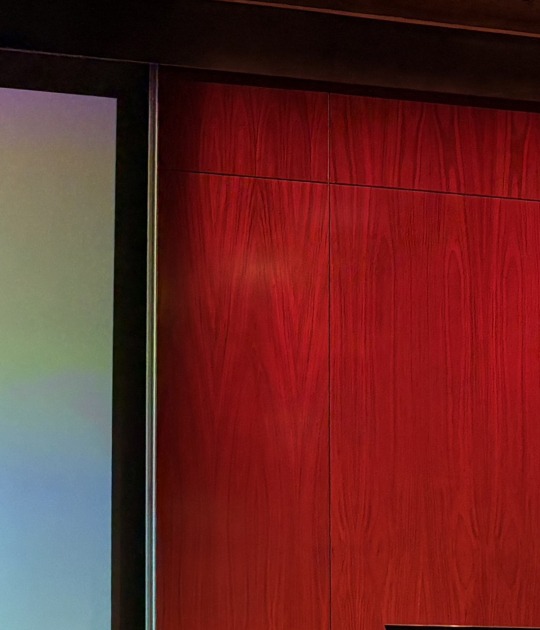Lina Bo Bardi soon became enthusiastic about her new host country. And with a multifaceted dynamism - as an architect, museologist, designer, writer, cultural activist and exhibition maker - she joined the renewal of the arts in Brazil, working on the same axis of the complex relations between modernity and tradition, the creation of avant-garde and popular customs, the individuality of the modern artist and the collective work of the people.
The subtitle of the exhibition is part of the slogan ("Tupí or not Tupí? That is the question") of the cannibalistic Manifesto of Oswald de Andrade (1928), an example of cannibal appropriation of the famous quote from the Shakespearean Hamlet. And it is that the so-called Brazilian "anthropophagy" of the twenties, which can be considered the most original aesthetic-ideological revolution of the Latin American avant-garde, pretended, in effect, the swallowing, absorption, assimilation and rethinking of European culture. With this, the artists of Brazil sought to make a cultural digestion that resulted in a national identity and a language that was both modern and genuinely Brazilian.
Lina Bo Bardi, aware that anthropophagy was at the base of the tropicalist movement of the 1960s - which she herself shared in some way - incarnated a kind of anthropophagy in reverse. For her, also the Old World, from which she came, had to be transformed by the look of the New World, in which she lived, to give way to a new society: to a sort of "aristocracy of the people" (in her words), of a new people, a mixture of the European, the Indian, the black and the native of the northeast of the country; a world full of dreams for a better future.
The exhibition is presented in continuity with the exhibition that Fundación Juan March dedicated to Tarsila do Amaral (2009), in which he presented Brazil from the twenties and thirties of the twentieth century. Lina Bo Bardi shared the social concerns of Tarsila do Amaral and struggled to answer them, moving into action through the architecture, objects and collective actions that articulate her work. The goal of Lina Bo Bardi: tupí or not tupí. Brazil, 1946-1992 is to present Lina from the three most conspicuous places in her geography (São Paulo, Salvador de Bahía and Northeast Brazil) and "tell", through her work and that of some of her contemporaries, the artistic and cultural panorama of Brazil of the second half of the 20th century.
The subtitle of the exhibition is part of the slogan ("Tupí or not Tupí? That is the question") of the cannibalistic Manifesto of Oswald de Andrade (1928), an example of cannibal appropriation of the famous quote from the Shakespearean Hamlet. And it is that the so-called Brazilian "anthropophagy" of the twenties, which can be considered the most original aesthetic-ideological revolution of the Latin American avant-garde, pretended, in effect, the swallowing, absorption, assimilation and rethinking of European culture. With this, the artists of Brazil sought to make a cultural digestion that resulted in a national identity and a language that was both modern and genuinely Brazilian.
Lina Bo Bardi, aware that anthropophagy was at the base of the tropicalist movement of the 1960s - which she herself shared in some way - incarnated a kind of anthropophagy in reverse. For her, also the Old World, from which she came, had to be transformed by the look of the New World, in which she lived, to give way to a new society: to a sort of "aristocracy of the people" (in her words), of a new people, a mixture of the European, the Indian, the black and the native of the northeast of the country; a world full of dreams for a better future.
The exhibition is presented in continuity with the exhibition that Fundación Juan March dedicated to Tarsila do Amaral (2009), in which he presented Brazil from the twenties and thirties of the twentieth century. Lina Bo Bardi shared the social concerns of Tarsila do Amaral and struggled to answer them, moving into action through the architecture, objects and collective actions that articulate her work. The goal of Lina Bo Bardi: tupí or not tupí. Brazil, 1946-1992 is to present Lina from the three most conspicuous places in her geography (São Paulo, Salvador de Bahía and Northeast Brazil) and "tell", through her work and that of some of her contemporaries, the artistic and cultural panorama of Brazil of the second half of the 20th century.

![Lina Bo Bardi, Project for a version of the armchair "Bardi's Bowl", 1951. Pencil, Chinese ink and chalk chalk on offset paper 21.4x31.4 cm. Instituto Lina Bo e P.M. Bardi, Sao Paulo [Inv.:022ARQd0040] © Instituto Bardi / Casa de Vidro / Photograph by Henrique Luz Lina Bo Bardi, Project for a version of the armchair "Bardi's Bowl", 1951. Pencil, Chinese ink and chalk chalk on offset paper 21.4x31.4 cm. Instituto Lina Bo e P.M. Bardi, Sao Paulo [Inv.:022ARQd0040] © Instituto Bardi / Casa de Vidro / Photograph by Henrique Luz](/sites/default/files/styles/mopis_news_carousel_item_desktop/public/metalocus_lina-bo-bardi_01.jpg?itok=emcrb3Lu)





![Lina Bo Bardi "Scenario for a tractor for the exhibition Paulista agriculture, Sao Paulo", 1951. Watercolor, colored pencil, bar wax and collage on offset paper 56.6x81.3cm. Instituto Lina Bo e P.M. Bardi, Sao Paulo [Inv.:018ARQd0002] © Instituto Bardi / Casa de Vidro / Photograph by Henrique Luz Lina Bo Bardi "Scenario for a tractor for the exhibition Paulista agriculture, Sao Paulo", 1951. Watercolor, colored pencil, bar wax and collage on offset paper 56.6x81.3cm. Instituto Lina Bo e P.M. Bardi, Sao Paulo [Inv.:018ARQd0002] © Instituto Bardi / Casa de Vidro / Photograph by Henrique Luz](/sites/default/files/styles/mopis_news_carousel_item_desktop/public/metalocus_lina-bo-bardi_07.jpg?itok=0wF6knOk)
![Lina Bo Bardi "Study of masts for the exhibition Caipiras, capiaus: pau a pique [Peasants: cañas y barro], 1984. Marker and gouache on offset paper 21.5 x 31.5 cm. Instituto Lina Bo e P.M. Bardi, Sao Paulo [Inv.:111ARQd0017] © Instituto Bardi / Casa de Vidro / Photograph by Henrique Luz Lina Bo Bardi "Study of masts for the exhibition Caipiras, capiaus: pau a pique [Peasants: cañas y barro], 1984. Marker and gouache on offset paper 21.5 x 31.5 cm. Instituto Lina Bo e P.M. Bardi, Sao Paulo [Inv.:111ARQd0017] © Instituto Bardi / Casa de Vidro / Photograph by Henrique Luz](/sites/default/files/styles/mopis_news_carousel_item_desktop/public/metalocus_lina-bo-bardi_08.jpg?itok=ZfgGRTaX)

![Lina Bo Bardi "Insecto", s.f. Lamp bulb with filaments and feathers 9x7,5x3 cm. Instituto Lina Bo e P.M. Bardi, Sao Paulo [Inv.:00.245] © Instituto Bardi / Casa de Vidro / Photograph by Ding Musa Lina Bo Bardi "Insecto", s.f. Lamp bulb with filaments and feathers 9x7,5x3 cm. Instituto Lina Bo e P.M. Bardi, Sao Paulo [Inv.:00.245] © Instituto Bardi / Casa de Vidro / Photograph by Ding Musa](/sites/default/files/styles/mopis_news_carousel_item_desktop/public/metalocus_lina-bo-bardi_10.jpg?itok=kwP9TTeJ)































